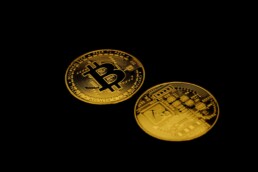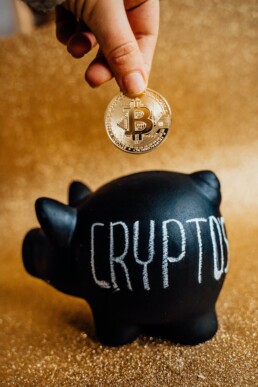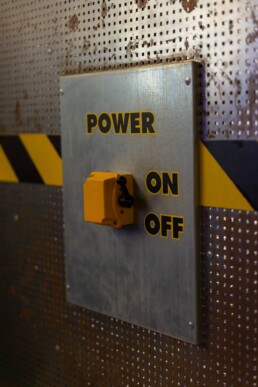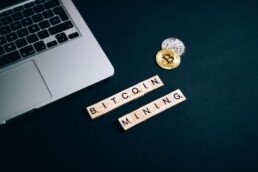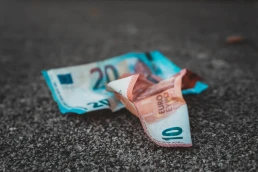Toxic Asset
In this article we will talk about the toxic assets in the belly of banks. What they are and why they are in your bank's balance sheets.
Banks have various assets within their balance sheets. among these we can find bonds, shares, loans and then various derivatives such as MBS mortagage backed securities, CDO and CDS (Credit default swaps).
The part that could be toxic almost all of the time are the last 3 elements, which are derivatives. These derivatives are created through securitisations.
Securitization is a financial technique specially designed to transform non-transferable financial instruments into other transferable financial instruments.
These transactions can generate cash flows, such as bank loans, and are "transformed" into divided and salable assets into bonds called Asset Backed Securities (ABS).
This financial activity is carried out to drain additional monetary resources from the market. Its popularity as a tool for raising loans has grown considerably in recent years, which has allowed banks to feed into the subprime mortgage granting mechanism.
Based on the securitized underlying, we can speak of securities like:
MBS (mortgage backed securities, the underlying of which are mortgages),
CDO (collateralized debt obligation, the underlying of which are public or private bonds),
ABCP (asset backed commercial paper, which are short-term credits).
To give you an example of real securitization, you have to think of a bank that has a number of real estate loans among its activities; if the bank decides to securitize these assets then it will issue securities, which have home loans as collateral, which will be sold to private or institutional investors.
Our bank sells this group of mortgages to a Special Purpose Vehicle (SPV for short), created specifically for the purpose, which issues bonds (in the specific case of mortgages, Mortgage Backed Securities) which sells to investors like Pension Funds.
The risk is transferred by the bank to the final subscribers of the bonds,the payment of interest of the bonds are linked to the effective collection of the interests of the loans themselves.
Understand that if these mortgages go unpaid, investors will see the value of their bonds go to zero. In the years before the subprime mortgage crisis there was a very sustained growth in securitisations all over the world, reaching a peak of approximately $ 11 trillion in the United States and € 2 trillion in Europe.
Understanding what a securitisations is, let's get back to our toxic assets.
Sometimes banks don't really know what's in their belly as the rating agencies haven't done a real due diligence, so the risk is masked or hidden and in the end the banks have bought assets whose problem only comes to the surface at the worst moment , like when debts are not paid.
Let's show another example, let's assume that all these assets are placed in a box and divide it into 3 parts.
We would find truly toxic assets, like financial products based on loans that will never be paid such as car mortgages, credit cards, home mortgages and personal loans.
Unfortunately, we all know someone who lives far beyond their possibilities. That someone is our toxic asset creator.
So these assets, which the bank paid at 100, are actually worth almost zero.
A second type of asset that we could find are long-term assets, or assets that today may seem toxic but which in the long term can be of excellent quality.
Think of a credit given to a company, like your neighbor who works seven days a week in his engineering company, which despite being small is an excellent shop, which has just modernized all its machinery. This company will be burdened with a large debt but with new machinery and its good management, within a few years it will pay off the loan and be profitable.
If the economy starts to grow again this kind of debt will all be repaid, so they are good in the long run but are also potentially toxic if the economy stalls or worse collapses
The third part, on the other hand, is made up of good payers, the couple who lives in the apartment next to yours and who have just changed the car for a bigger one because they want to expand their family. They are both employees, so they have a stable job and this potentially puts them in the category of debts that are paid consistently and always on time. These are great assets. They are owners of credit cards that pay their debts, mortgages that are regularly paid off, etc.
Now let's look at everything in terms of the economy. At a time when the economy is in dire straits and slows down
The first group, toxic assets, actually has zero value.
The second group, the potential assets that the banks have paid at full price, begin to lose value.
The loss of value is not given by the payment problems by the debtors but because these assets are poured into the market because the banks have to cover their expenses and then sell them to make cash but the large amount of assets on the market causes the price to drop to a tenth of the initial value.
The second group would be an asset to be held but the banks need cash. Fast.
And the problem worsens as banks will have to account for these assets with their market price, no matter if the bank believes the value is 100. If the market prices at 50, this will be the value to be accounted for
The more pressure there is on the bank and other banks, the more they will have to sell these assets. Assets that are not toxic to payers, but toxic to the bank
As the economy continues to deteriorate, it is likely that the bank will also have to sell the assets of the third group, the best of the lot. This unfortunately in turn leads to a fall in the price of top quality assets and this means that even these become potentially toxic for the bank.
As you can see, everything is originated from the initial toxic assets.
Bitcoin halving in May 2020
The bitcoin halving is an event that occurs every about 4 years and halves the remuneration of closing a block of the Bitcoin blockchain. It is one of the main features of bitcoin monetary management.
In order to better understand what we are talking about, however, we must review 3 fundamental points which are:
Bitcoin blockchain
Mining
And the total supply of money
Talking about the BlockChain, it is a live record of all bitcoin transactions. The blocks are made up of the transactions within them, and the blocks are linked together in an indissoluble way.
The block is created when a defined number of transactions are made and the block can contain a maximum number of that transactions. Reaching this number, the block is closed and added to the block previously mined and linked to it.
When a Bitcoin transaction occurs, the data is communicated to the network of computers that validate the transaction, add the transaction to the bitcoin ledger and transfer the ledger change to all computers on the network. Since there is a maximum of data that can be saved in a block, a block is closed approximately every 10 minutes
Mining is how transactions are verified within the coin network. The verification and creation of the blocks is created by the miners. Each group of transactions has a cryptographic hash of the previously published block and this connects all to the previously created blocks creating the blockchain. To accept a new block on the network, miners are required to follow a proof of work system that involves the creation of a new cryptographic hash to add to the new block. To be added to the register requires the creation of a new single hash which will go through a validation process and then will be passed to the next block and so on. To create a new hash, miners compete with each other using the computing power of their computers to be the first to have the 64 digit hexadecimal number or hash that is at the same target difficulty level as the network.
The thing to understand is that the miners are remunerated at the closing of each new block with new bitcoins created by the system and by the transaction fees, which are already circulating btc. The rewards are created to incentivize miners to participate in the bitcoin blockchain.
Learn more about Mining here..
The amount of money.
Bitcoin was created as digital gold. Satoshi deliberately created bitcoin with characteristics similar to the physical gold. The principle of mining bitcoin is similar to gold mining, which is long and difficult. Another feature is the maximum amount of bitcoins that can be created which has been programmed to be 21 million. This number was created to copy the inflationary stability of gold. In this case, the term inflation is used for the growth of the amount of money that is not covered by gold in a gold standard.
In the modern way of understanding the term inflation, bitcoin is deflationary because his purchasing power grows over time. Compare it to the gold extraction profile where in the future the cost of extraction will be increasingly higher and more difficult and therefore the previous quantity of gold extracted will increase in value because no more can be produced at low prices.
In the old concept of inflation, bitcoin is inflationary because, not being covered by gold, the quantity of bitcoin grows as the creation of blocks by miners increases. There are now 18 million in circulation. At the current rate, the last bitcoin will be created in 2140
Let's go into the halving detail
The halving referred to the bitcoin blockchain is the reduction of the closing reward of a block for miners to half the previous number. The current reward is 6.25 bitcoins per block.
The halving takes place every 210,000 closed blocks and therefore more or less every 4 years since a block is closed every 10 minutes. Initially, the block reward was 50 bitcoins, which dropped to 25 in 2012 and then 12.5 in 2016
But why does halving happen? Satoshi planned halving to lower bitcoin monetary inflation. In addition, the technological advancement factor of mining machines is also considered and for this there is an increase in the difficulty of creating new blocks to lower the validation speed.
With 12.5 bitcoins per block and 10 minutes of build per block, around 1,800 bitcoins are created daily. After May 2020 these dropped to 900 bitcoins per day.
Now returning to the previous parallel with gold.
It is considered one of the best stores of value due to the fixed presence and its scarcity which is imposed by nature.
The bitcoin algorithm is created to make it scarce. So as the demand for bitcoin grows, the value will grow. There have been major rises in btc prices months after each halving, but this is a trading strategy that you may or may not consider.
Bitcoin as it is created in its algorithm, is made to be scarce and therefore grow in value as long as people like you and me believe in its intrinsic philosophy.
Monero
Today we are explore a crypto coin that works really good on privacy.
Let's talk about Monero.
Monero is considered a Private decentralized crypto currency, a decentralized coin that bases its story on privacy and not on anonymity.
It is necessary to define these two different concepts.
The concept of Privacy in cryptocurrencies is based on the fact that you as a user do not want other subjects to know what you are doing. The action you do must be unknown, but the identity of the person who performs it is public.
In the other side, anonymity means that it doesn't matter if other users know what we're doing, but these users don't know who is doing these actions. In this case we have Public Actions and Unknown Identities.
If we take for example the most famous cryptocurrency in the world, namely Bitcoin, we would discover that it is not private. The actions made by users are Totally visible on the blockchain but the identities are anonymous. In reality partially anonymous, or rather pseudonym.
Monero, on the other hand, is a private crypto that does not expose who sends money, how much it sends and to whom.
The transactions are traceable and the subjects who benefit from them cannot be indicated. It is not possible to understand who the transaction started from or connect them with others.
The first thought of all very often is that with such coins, only Criminals can benefit from it. But that's absolutely not true.
Monero was created for those who want to maintain their personal privacy and security, for those who do not want to be tracked by the big data of the big companies of the internet age in their routine behaviors.
Monero is also a great way to Cover the presence of a large personal btc build-up that could be attacked.
Monero has a possible use also for market predictions.
If we knew the addresses of the exchanges, we could monitor the quantities of coins entering and leaving these addresses, using this information to create long or short strategies based on our analysis.
Monero then solves the question of the fungibility of a traceable currency.
Each coin or cash note, in the real world, is the same as the other and must not be of interest to you where it comes from. We know from many newspaper articles that some of the bills we handle to buy bread may contain traces of drugs or have been used to buy other illegal materials.
However, in the bitcoin blockchain you can trace the path of each coin since its creation, so it could happen that some government agency knocks on your door in case of some investigation. All this is pure abstraction but who knows, in theory it can happen and that is why virgin bitcoins exist
A completely private coin like Monero has a complete fungibility like the 50 euro just out of the ATM and does not have this problem.
The difference between other private coins such as Zcash and Dash is that these offer the option of private transactions while Monero only offers private transactions.
The monero protocol works by obfuscating the three parts of the transaction. So Who sends, who receives and the total amount of the transaction
The system is created to obscure those who send money via a system called ring signatures. whoever makes a transaction has their signature mixed with signatures of previous transactions, creating confusion and the inability to trace the starting address of the transaction.
The amount sent is obfuscated through the Ring C T or Ring Confidential Transaction, where the sender sends only a small piece of information and this is enough to verify that the amount is legitimate. I will not go into the technical details as they are very complicated, but you can find everything on the official website of monero.
The recipient of the transaction is protected by the so-called Stealth Adress, in fact when it is sent to a public address, in reality I am sending to another address of unique use that is derived from my public address.
This creates a separation between addresses and only my private key will be able to use the funds sent to my address
Monero is a Proof of work blockchain and CryptoNight is its algorithm
Monero can still be mined not only from very powerful PCs but from PCs of normal use and there is no limit to the creation of coins.
Learn more about Mining here.
Bitcoin Fees
Bitcoin fees are the payment method decided to pay miners for processing the transactions that are made on the bitcoin blockchain. However, to understand how the fees are calculated, we need to consider what happens when we send bitcoins to another address
When we send any amount of bitcoin, the first step is the verification of the transaction, when the transaction is checked by all the computers that have a copy of the distributed ledger. These computers called nodes check the history of our bitcoins, checking that they are really on our address. After that, once the transaction has been completed, it is inserted into the mempool or memory pool.
To better understand, the mempool is like a waiting room of a virtual airport, with all the transactions waiting to take the plane to enter in a block, or a miner that picks up them and locks them in one of the blocks of the blockchain.
Now the transaction is considered unconfirmed despite being valid and included in the list of transactions that took place.
The transaction is confirmed when a miner takes the transaction and places it in a block and the funds are transferred when the block is closed.
Always remember that blocks have a specific size. if we were in a period in which many transactions take place, obviously the miners will give priority to transactions with higher fees.
So Fees are a way to tell the miner how urgent your transaction is. Faster speed need higher fees to be paid, which are always paid by the sender and there is no way to avoid pay them.
In case we want to calculate the fees, we must remember that the transactions have a size, as if they were files stored on your computer so the miners who want to maximize their earnings, will prefer transactions with a high fee but low weight.
The size of a transaction depends on several factors:
The first factor is the number of inputs.
The bitcoins we have in our wallet are a sum of the bitcoins we have received over time combined with those we already owned on this wallet. This sum is called inputs. When we send bitcoins to someone, we select some of these inputs sent by others and transform them into outputs.
Now, the more inputs a transaction has, the greater the size.
A second factor is the number of outputs, the number of addresses we are sending to.
If we are paying to a single address, we are creating two outputs, one for the address it sends and one to receive the rest of the initial payment.
In fact, if our bitcoin account is a sum of inputs from different sources, these inputs cannot be spent in part but must be sent in their entirety to the receiving address and we will receive the rest on our wallet without realizing it.
Let's assume we have a wallet with 3 bitcoins, formed by two inputs of 1 and 2 bitcoins. In case we have to spend 1.5 bitcoins, our sending will be 2 bitcoins with the remainder of 0.5 going back to our wallet.
Another important factor to consider is the complexity of the script. Some transactions use special options such as multi sig, which increase the size of the transaction for the average user, calculating the size of the transaction is quite difficult but don't worry, our wallet will take care of it and will also suggest the most correct fees at the time of sending.
It should be remembered that the blockchain does not mark the cost of the transaction explicitly. If you want to mark the costs you will have to check it specifically
There are ways to reduce bitcoin sending fees:
avoid sending bitcoins when it is rush hour on the trading markets. If we are in the middle of a bitcoin pump or a dump, with great volatility there will be a lot of movements between trader wallets and exchange wallets. Those in hurry will put higher fees so the price at that time will be higher.
In addition, you can use a segwit wallet that lowers fees and transaction sizes.
In the event that the fees are absolutely crazy, you could use other coins that have much lower costs such as Ripple for example.
Obviously there would be other costs related to the use of exchanges. In this case, the atomic swap comes to help. Do your math before testing this solution.
As already mentioned, most wallets give suggestions and indicate which are the most suitable fees for the moment in which we are operating. Pay attention because there are also wallets that charge too much, so also on this aspect a specific search must be made for the best product. Generally it must also be said that the most advanced wallets give the possibility to choose different options, more or less fast and expensive.
However, if you are stingy, and you don't pay enough fees, it sometimes happens that transactions are blocked just because the fees are too low and no miner is interested in your transaction.
in this case what to do?
the available options are to wait at least 72 hours or use an RBF replace by fee system, which allows the wallet to replace low fees with higher ones but beware, not all wallets support this option.
Hypothetically, a transaction cannot be blocked forever but it really depends. In fact when we talked about mempool at the beginning of the video, we didn't specify where the mempool is. It is not only one but each node of the network has a section dedicated to it, different nodes have different versions of the mempool.
If a transaction is not confirmed, it is deleted from the mempool, the ordinary cancellation time is 72 hours.
However, it may happen that the node where the mempool resides with your transaction does not delete it.
Fees are a big problem for Bitcoin and they can be for you too if you move large amounts without thinking about it.
Learn more about safety here.
CBDC - the DCEP Digital Yuan
Not so long time ago, we crypto people were insulted, called thieves, evaders and money launderers. And then, some time passes by our government start talking about Central Banks Digital Currency and all the banks start to sell bitcoin.
Oh well it's always like this. But let's talk about the first authorized state cryptocurrency, namely the Digital Yuan or DCEP, which will surely be a nice tool in the hands of Chinese economic policy.
Dcep is the acronym for Digital currency electronic payment and will be a national digital currency, or a digital national currency, or a digital form of FIAT currency.
Precisely in its digital form, one of the DCEP missions is the replacement of paper fiat money, practically what we hear about the abolition of cash to bring you to a society that can be defined as cashless. It should be noted that digital payments with apps such as WeChat are currently the norm in China and the change would not be as drastic as in European societies.
Let's go into the details of the Digital Yuan. This will be created by the PBoC People bank of China, it will be a centralized currency and will not be minable or stake. At the time of the creation of this video, the system is in the testing phase but in the Chinese government's plans there is the will to reach full operation and replace paper money by 2022. And I'm sure they will succeed.
The blockchain system on which the coin will run is called Chinas Blockchain Service Network BSN and is managed by a Chinese government agency that also manages some of the major state telecommunications companies such as China Telecom and China unicom. The BSN is designed to be easy to use and to be able to develop and operate nodes and applications on the blockchain.
At the time of writing, the digital yuan is only accepted in some chains in China, but the government has issued a decree requiring all merchants that accept digital payments such as AliPay and WeChat to also accept Dcep. These tech giants are also rocketing to make the currency compatible with their payment systems. In a short time, the DCEP will become the most used digital currency in the world.
In fact, even its practical use is oriented towards its diffusion. In fact, it uses the NFC system, which does not require your mobile phone to be connected to the internet during the transfer, which means that it can also be used in areas without a connection. It doesn't even require your wallet to be linked to a bank account. Think of all those people in the world who do not have access to banks, not only in China but also in all African countries. These people will be able to use the digital yuan without any problems.
The Dcep built on the blockchain and with cryptographic technology is designed to spread as a payment method in the world, dramatically increasing the circulation of the Yuan and competing with the US dollar as a world currency.
China wants to become independent from the dollar, protecting itself from possible sanctions and trade wars. With the digital Yuan we not only have a payment system but a system of geopolitical influence, which will transform the world as we know it.
I am sure that in a short time we will see similar currencies developed by the United States and the European Union as well.
It should be specified that the DCEP is very different from Bitcoin, since it is totally centralized and in the hands of a government. This will give full traceability of payments, preventing money laundering and illegal payments if possible. It will be the umpteenth instrument of citizen control in the hands of the state.
Mining, staking and forging for noobs
We often talk about mining, mining farms and energy consumption of cryptocurrencies. But what is mining in 4 simple words?
As we have already read, the blockchain is made up of concatenated blocks, inside which data or financial transactions and payments are written.
In order to avoid scams, counterfeits or even tecnical errors in payments, the data contained in the blockchain must be verified and this is exactly what mining is about.
Mining represents the verification procedure that is carried out by exploiting the computing power of the computers owned by the individual miner or by the mining farm. A mining farm is nothing more than a place, often a warehouse, with a very large number of computers that work and produce blocks.
Once a block verification process is complete, the miner who created the new block will be paid for his verification work. Mining keeps the blockchain alive.
To validate transactions within a blockchain network There are several systems implemented to achieve consensus
A "blockchain protocol" is a common term for consensus methods.
Some of these require investors to purchase physical mining equipment, while others require no physical hardware and only possession of coins.
Let's see the details aboud different consensus methods:
- PoW: Proof of work - This type of consensus is generically called mining and consists in the creation of computational power thanks to mining rigs formed by serialized graphics cards. This computational ability solves the coin algorithm and creates the blocks. Bitcoin is based on this system, which is not particularly eco-sustainable.
- PoS: Proof of Stake - the type of consensus to create blocks is defined staking and is based on the possession of a large number of coins that, when placed in staking in one's wallet and therefore not available on the market, allow the owner to mine the blocks of this blockchain. Ethereum is based on this method, which is greener than proof of work
- DPoS: Delegate proof of stake this type of consensus for the creation of blocks is defined forging and is based on delegates voted by the community of coin owners. Lisk and rise work with this system, which is as eco-sustainable as proof of stake.
In DPOS systems, forging is another way to mine coins in order to validate their transactions and put new money into circulation. This system consists of 101 delegates located around the world who keep a node (server) online where the coin client runs.
This software allows you to maintain the decentralized network, validate transactions, issue new money into circulation and reward delegates for their service. Delegates don't have to be 101 but can be 51, 201, 301, 501, etc. according to the needs of the network. To become delegates there is a voting system based on the amount of money owned (stake).
If you want to become a delegate you need to reach a sufficient number of votes to be able to enter the top 101 (approval).
The DPoS (Delegated Proof of Stake) system is a method aimed at ensuring a network of digital tokens that takes place by processing transactions and achieving distributed validation inherent in the ownership of money without the need for a central authority.
This system represents an evolution that started from PoS (Proof of Stake), also developed in order to reduce costs and the inefficiency associated with the consumption of electricity typical of PoW (Proof of Work) systems, used for example by Bitcoin.
Mining how to do
This block creation can become a profitable business if done with the proper criteria. Obviously we are currently talking about large initial investments in material and hardware.
Before starting, however, we must understand that the two main problems you will encounter will be the exploitation and consumption of the hardware, which will shorten its useful life, and the energy costs given by the electricity bills, which will skyrocket compared to a normal household use. . After that it must be said that each coin is different and that some coins in particular require specific hardware.
Let's see how to mine
The first idea that comes to mind is to use our home PC, or an old laptop set aside in some dusty closet. Old hardware could be an obstacle to profitable mining given the possible low computing power if you use old hardware.
In this case, the mining of coins that are at the beginning of their life and that do not require particular computing power should be considered. But dont put to much hope in that solution.
A second solution can be to participate in a Mining Pool. Basically you participate with your hardware and your computing power in a group where other people gather computing power to undermine. The large number of devices made available means that the possibility of mining blocks in the blockchain is much higher and therefore potentially profitable. The proceeds will then be divided in proportion to the computing power made available. You will have againt the tipical two problems of energy cost and consumption of the hardware, and in addition there is the possible lack of transparency of the group of miners, who could remunerate the individual less than due, cheating him.
A third way could be to rent computing power through CLoud Mining services, services that provide dedicated paid packages for a defined period of time. Since you do not operate with your own hardware, the cost of wear and energy is reduced, but these are replaced by the cost of renting the computing power. In this case, however, there is the possibility of being scammed on the amount of coins that are recognized by the service for the same hashing power rented, a quantity of coin that over time becomes less and less, justified by the growing difficulty of extracting the coin.
Finally, a fourth way is to go big and create your own mining farm, with a lot of networked computers that mine our crypto currencies. In this case we are talking about very high budgets, well over 200 thousand dollars.
In this case, we must take it into our head to become entrepreneurs, so first of all we will have to think about locating the farm in a country with a low cost for electricity. Later we will have to think about what to mine, because for each coin or type of coin there are different hardware that are more suitable. Mining Bitcoin or ethereum is not the same thing. And let's remember that we have to mine a profitable coin, which is not so obvious today.
The supply of hardware for the creation of the farm will be a problem to consider given its possible scarcity and cost, and also its replacement given the premature wear that we will encounter.
We will also need at least one or more professionals dedicated to the management and replacement of parts.
Since the farm has to operate 24/7, it will be a long and demanding job. Creating a farm is not easy and not always profitable, in fact these are general indications. Many farms have been opened and closed in a short period of time not only due to the inability of the entrepreneurs but also due to the volatility of the market. It is a difficult market and it is necessary to have very in-depth specific knowledge, both in the technological and in the economic field.
Cryptocurrencies to be mined.
If you have decided to dive into the world of mining, you must know that it is important to carefully choose which currencies to focus your efforts on, in fact, depending on the currency chosen, mining may require specific hardware or even more or less power. Furthermore, with a view to evaluating the investment, it must be considered that the trend in the value of the currency (heavily influenced by the progress of the underlying project and the size of the community) affects the results.
What if the miners suddenly stopped?
What if miming no longer generates profits? That is, what would happen if the revenues did not cover the costs of the equipment and the electricity used and the miners decided to stop or switch to another currency? Is it true that without miners, Bitcoin would stop working or become too slow?
No it does not. a blockchain continuously adapts its criteria to keep the creation rate constant. If there were 90% fewer miners, then 90% fewer calculations would be needed to approve a new block, and the operation would not be affected.
The absolute value of the reward for a new block decreases over time, all programmed according to the rules that govern Bitcoin. During the first 4 years of its creation (2009-2012) the reward was 50 bitcoins
However, in the event that the miners all stop their activity, the blockchain would stop and consequently it would no longer be possible (until the mining activity is resumed) to carry out any transactions or add blocks to the blockchain.
Learn more about Mining from an investor perspective here.
Trading: the mistakes you will make. For Sure.
Trading is not a simple and straightforward activity. It is a long journey, made up of study, sweat, monetary blood spent every time a mistake is made. It is a solitary journey that not only involves our bank account, but also our most hidden inner part, awakening fears and invalidating our psyche. Every mistake you make is a source of pain but no one becomes a capable trader without going through this path.
Today we are going to see some of the mistakes you will surely make as a newbie trader.
The first mistake you may run into involves doing too much or too little paper trading. Here we need to understand how you are made at the level of psyche. Paper trading is a training system for traders that consists of creating sales and purchases on paper, without real money, to train and understand how it works. However, paper trading lacks a fundamental component which is anxiety about the use of real money. On a paper trading account we can also have 100 thousand or more euros invested, but not being real money, your behavior will be easily swashbuckling and arrogant. zeroing the trading account will not be a problem.
Zeroing the account doing paper trading is not actually a real problem, but if you analyze what and why it happened. The best thing to do would be to switch as soon as possible to trading with real money, with small amounts, to begin to get used to managing the tension of maintaining the position on the market and managing the emotional waves of seeing the value of the asset purchased increase or decrease. . More paper trading could serve those who are braver and more gamblers, while a more timid and calm person could leave earlier given his less aggressive disposition.
Another mistake that arises from the first is to use a too big size of the market position. Because there will be a time when we will be so confident in ourselves and our analysis, that we will put half of our portfolio on that stock that we are sure will go up.
And then after a short time to see it collapse sending us into total panic. At which we will have to decide whether to face the pain of losing money and defeating our beliefs or to hold the position ignoring what would be right to do, transforming a short-term trade into a long-term investment, without having any idea when it will be changing trend.
This error also brings with it the anxiety of having a lot of our money invested in a single position, anxiety that will be present even if our position is positive. In fact, anxiety will most likely get us out of the position much sooner than we should, making us bring home a meager income.
The second mistake is related to the third mistake, which is not having a trading plan. Having a trading plan means having an idea of what our goals are for earning and safeguarding the portfolio. It seems obvious but it is not, and above all having a plan helps us to discipline ourselves on the markets.
In fact, planning protects us from another mistake, which is over trading or exaggerating by taking positions. In fact, it can happen that after a series of particularly good and profitable trades our ego pushes us to risk more and more, in the belief that we are very good and we cannot make mistakes. If all the trades have been positive before, these will certainly be positive too, bringing us one step closer to wealth and happiness. On the contrary, in fact our ego is one of the biggest enemies we have, as it deflects our vision and perception of the market by endangering our account.
Being emotional is a mistake that we will always pay dearly for. Being cold and focused means seeing things as they are and not as we would like them to be. Emotion is the enemy of victory especially when it leads to greed. There are situations in which being satisfied is the right choice, in fact the emotionality will mean that we will still be inside the trade that we will have to sell, losing all the profits and going at a loss.
The emotionality leads to what is called FOMO, fear of missing an opportunity. We think it is an unmissable opportunity and we throw ourselves headlong without thinking about it and without analyzing, only to end up making a mistake that cost us part if not all of the trading account. The FOMO is that illogical and illusory push that deceives us and leads us into deception. Think about when prices are high and people who know nothing about it enter the market, buying pushed by the mass media. Think about when your hairdresser tells you to absolutely buy that specific action and that he was good at just taking it. Nothing against hairdressers, some know even more than me, but if your hairdresser knows nothing and tells you so, this is a great example of FOMO.
When you are filled with emotion, you don't have to sell or buy. You have to study, update, train but not trade. Emotions equate to losses.
You have to follow your take profit and stop loss. If you have put them on and you are not totally stupid there will be a reason, and if you have put them without a sense you are perhaps a beginner and it can even be there. Know them and not follow them, this is being stupid.
And being stupid is always waste of money and a loss of money is pain.
Cloud Mining
Let's go into the details of Cloud Mining. Btw you can learn more about Mining here.
Cloud mining is a service that allows you to mine bitcoins without having the necessary hardware but renting it through contracts with different companies around the world.
Bitcoin mining as we know is demanding and expensive, consumes energy and is sometimes even unprofitable.
In addition, profitable mining today after the last halving of May 2020 is even more difficult as the reward for closing a block begins to be scarce, and it will get worse and worse given how bitcoin is structured.
Without a low-cost power source to lower operating costs, mining farms are often a loss.However, cloud mining comes to the aid of farms that by selling their own mining contracts are able to recover funds for their survival.
For many people just entering the cryptocurrency world and wanting to diversify their investments, cloud mining contracts can be a possible way to go.
Simply investing your capital, sometimes without even setting up the machines yourself, is a strategy to be considered risky.
In fact, it must be assumed that for the user who has just entered the crypto world, lacking the appropriate equipment, the necessary skills, and low-cost electricity, cloud mining contracts are also a risk of being scammed.
These contracts de facto discharge part of the farm investment risk on the users who sign them, in exchange for a part of any profits.
These contracts are actually simple rental contracts for equipment and management to mine coins.
The owner and manager of the farm collects the fixed monthly or annual fee of the contracts sold and not through the creation of cryptocurrencies.
There is no need to mine bitcoins in reality, the farm could in cases of scam, not even exist with the manager who cashes the contracts without delivering bitcoins to customers because the farm fails to mine due to the difficulty of mining.
Serious cloud mining companies exist, you just have to commit to finding them, however, being aware of the risks of the investment. You must always stay away from those who promise you easy, fast and abundant earnings by paying very little.
If you really want to invest in cloud mining, privilege the study of coins and how to set up the machines.
Look for contracts where you set the usage parameters of the rented computers. If you have been good, you will have to celebrate.
Derivatives
What are derivatives ?
Derivatives, as the name implies, are financial instruments that derive from something and have become famous in mainstream media after the financial crisis in 2008.
Derivatives normally have the function of insurance or hedging and transferring the financial risk between two parties.
This category can include any instrument whose price is based on the value of another asset, defined as "underlying" (such as, for example, shares, financial indices, currencies, interest rates, commodities
We can explain the derivatives with an example
Luca is a guy who has a family tradition. For the Christmas lunch in his very large family they consume 10 swordfish for a total of 200 kg of fish.
The tradition has lasted for years and Luca is in charge of supplying the fish.
It happens, however, like the year before that Luca had difficulty finding fish to continue the family tradition and mindful of all the extra work done the previous Christmas, for this Christmas he wants to be prepared and never repeat the bad experience.
Then Luca moves in search of a large fish farm in his area and contacts the farmer.
Luca asks to the farmer if he can assure him the supply of fish for next Christmas. The owner is not convinced, but offers Luca to buy the 10 swordfish in advance.
If Luca pays now, the owner guarantees him the supply of the 10 fish.
However, the price will fluctuates through the year, so they agree on a total price that satisfies both of 100 euros.
The owner of the farm then creates a note (IOU) equivalent to the value of 100 euros for 10 fish that can be collected when the owner wishes by a certain date before Christmas.
What we have now is a contract, an agreement that is derived from what is his underlying, in this case the purchase of swordfish, with an indicated quantity within a period of time
So the derivative is a contract based on an underlying.

There are 3 types of derivatives contracts:
The first is the future forward, which is essentially our example, that is the delivery of 200 kg of swordfish in the future.
The second type is called option, which is a future as previusly but with the option to buy or sell.
In the example given Luca may be worried of the risk of not having the fish or farmer may not be 100% reliable.
So Luca protects himself with a purchase option with another breeder, and pays 20 euros for the right to buy the 200kg of fish before Christmas.
So Luca will have this purchase note for the 200kg of fish and he now has the right to exercise this option before Christmas.
Luca therefore now to be absolutely sure of having these 200kg of fish has opened a futures contract with the first farmer for 100 euros and in addition he protected himself from any problems with an option with the second farmer.
An case all goes well with the first breeder, the option will simply expire and be forgotten.
The third type is called SWAP.
It is applied to instruments that have variable interest over time, so if you want to switch to a fixed rate, the bank will take the risk of the spread between the two rates, trying to earn from it.
The underlyings of this type of derivative can be commodities, interest rates, credit rates, etc.
The interesting thing about derivative contracts is that they can be traded and are traded on exchanges or OTCs (i.e. face-to-face agreements between people)
In our example it could happen that Luca and his family have to skip Christmas lunch.
Knowing this, Luca can sell the purchase contract to a friend of his, who could offer him 80 euros for those 20kg of fish.
In this case Luca would lose some currency but he would not have to withdraw the fish and would have recovered part of the money spent.
Otherwise, it could happen that swordfish is nowhere to be found that Christmas and Luca could sell the contract for those 20 kg for 200 euros, displeasing the family but making an excellent gain.
What is important in derivatives is the contract and not the underlying. The underlying is a problem when it creates a toxic asset with the derivative, as we explained in our video dedicated to this issue.
Luca in our example is absolutely not a risk, the risk for Luca is the first breeder.
In the event that all the fish died, Luca would remain with the only contract without validity and without fish and for that he is covered with the option.
Why do altcoins exist?
Why altcoins exist? and what are they for?
Alt coin is the abbreviation for Alternative Coin, or coins alternatives to Bitcoin.
Bitcoin as we know was the first truly successful cryptocurrency, which show the way for all those who followed it.
But Bitcoin is not perfect and altcoins are used to create a hypothetical better version of bitcoin or a coin that has different purposes and functions from those of Bitcoin, in fact some of them are faster than bitcoin, others focus on anonymity, others do different things like ethereum and others.
Altcoins can then be mined in a different way, for example bitcoin has an algorithm called SHA 256, an altcoin like Litecoin, which derives from Bitcoin, has a different algorithm called Scrypt.
There are now thousands of altcoins on the market, but only a very few have achieved a decent fan base. We must in fact divide the coins that have a utility, the coins that are based on projects that do not really have to do with the blockchain and coins that are exclusively scams or useful for the Pump and dump.
A good way to analyze the coin we have spotted is to understand if it has a following by first checking the market cap and then the community of users who use or follow it.
The market cap is the term used to indicate market capitalization.
This is calculated by multiplying the number of coins in circulation by the price of the exchange. A high value generally indicates a certain interest from the world and therefore value within the coin.
Remember that you can invest in an altcoin both when it is already on the market and before it is issued, in what are the famous ICOs.
if you want to invest in an altcoin, in the post ICO period, in general you will have more information and less chance to buy a scam but most likely if the coin has an actual use or value, you will pay much more than the price of the ICO.
So inform yourself and study well and always beware of ponzi schemes and fraud.
Learn more about Scam here.




